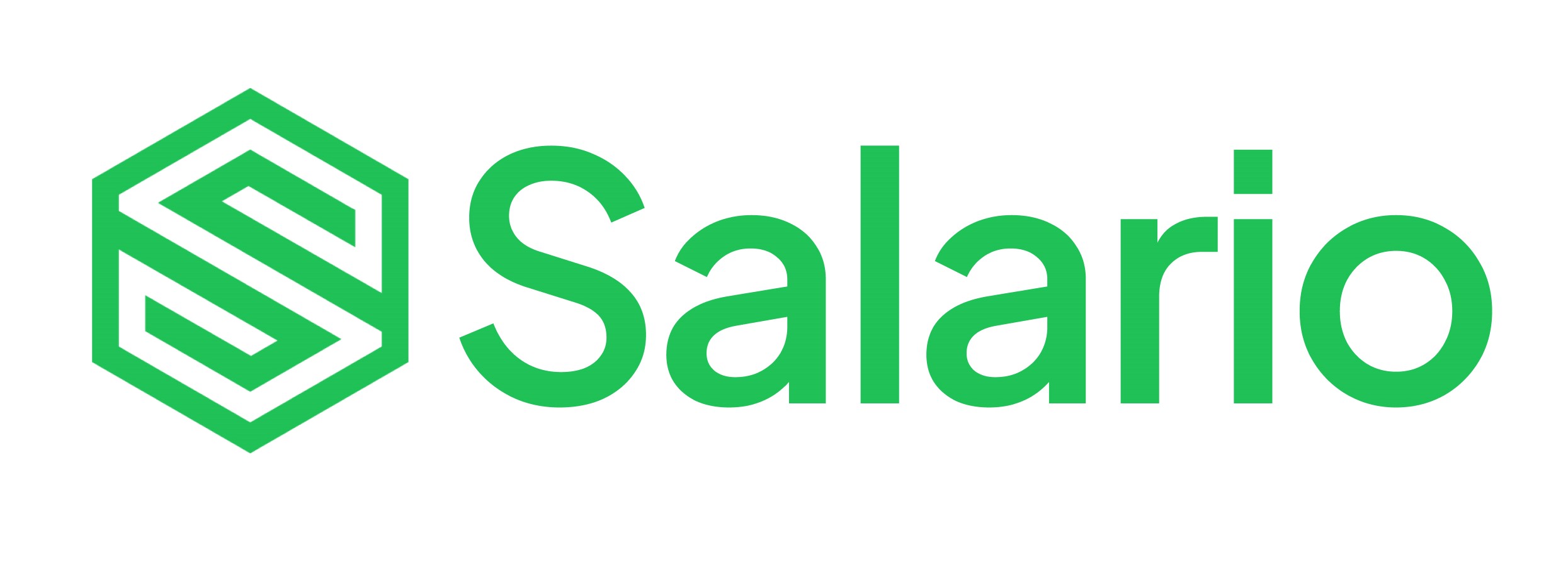
When people see or hear about payroll automation, they think AI and robots, and the ideas from movies can make you think these concepts are here to run you out of business. This idea can be easily debunked if you have worked with AI and automation processes at any point in the HR process. In fact, you’ll agree that they simplify tedious processes and reduce mundane and repetitive tasks.
As an HR manager or CEO of a small business, you’re responsible for ensuring employees are paid accurately and on time. While payroll management software can help streamline this process, the demands of day-to-day operations often pull you in multiple directions, making it challenging to stay on top of payroll. This is where payroll automation comes in. Payroll automation can take over the repetitive, time-consuming aspects of payroll processing, allowing you to focus on growing your business. In this post, we’ll learn about the world of payroll automation and explore how automatic payroll systems can enhance efficiency, accuracy, and compliance.

Benefits of Payroll Automation for Small Businesses
Payroll automation offers significant advantages for small businesses that may not have large HR teams or dedicated payroll departments. Here are some key benefits of automatic payroll:
1. Increased Efficiency and Time Savings
With manual payroll processing, tasks such as calculating wages, deducting taxes, and tracking time are often labor-intensive. Payroll automation software can complete these tasks in minutes, reducing the time HR teams and business owners spend on payroll. Small businesses with limited HR resources can use automatic payroll systems to free up monthly hours that would otherwise be spent on payroll calculations, data entry, and compliance checks. By automating these tasks, businesses can redirect this time to focus on growth-oriented activities.
2. Enhanced Accuracy and Reduced Errors

Human error is a common issue in manual payroll processes, leading to miscalculations, overpayments, or underpayments. Payroll automation software performs precise calculations, ensuring that employees are paid accurately and on time. This not only reduces the chances of payroll disputes but also minimizes potential financial losses for the company.
Consider an HR manager responsible for calculating overtime manually. With payroll automation, the software automatically calculates overtime based on pre-set criteria, reducing the risk of error and ensuring fair compensation.
3. Improved Compliance with Labor Laws and Tax Regulations
Keeping up with changing labor laws and tax regulations can be challenging, especially for small businesses. Payroll automation systems are designed to stay up-to-date with the latest tax tables and regulations, ensuring your business remains compliant. Automatic payroll systems can automatically update federal, state, and local tax rates, reducing the risk of non-compliance and avoiding costly penalties. Salario’s payroll automation feature, for example, ensures compliance by adapting to these regulatory changes seamlessly.
4. Enhanced Security and Data Privacy
Payroll involves sensitive employee information, such as Social Security numbers, bank account details, and salary information. Payroll automation systems often come with robust security features, such as encryption and access controls, to protect this data from unauthorized access. In a payroll automation system, only authorized HR personnel can access employee payroll data, reducing the risk of data breaches and ensuring compliance with data protection regulations.
5. Cost Savings
For small businesses, cost savings are a priority. By automating payroll, businesses can reduce the resources spent on manual data entry, error correction, and compliance management. Additionally, many payroll automation platforms offer scalable pricing plans, making them accessible even for startups and small businesses.
A small business can implement payroll automation software for a fraction of the cost of hiring additional payroll staff, while still benefiting from accurate, compliant, and efficient payroll processing. This might seem unreal, but there are increasingly more affordable payroll processing options on the market that make it easier to process more for less.
Streamlining Payroll Processes with Automation
Payroll is more than just processing employee paychecks; it involves multiple steps, including data entry, calculations, compliance checks, and reporting. Payroll automation software can streamline each of these processes, making them faster and more efficient.
1. Automated Time Tracking and Attendance
Automated time tracking systems enable employees to clock in and out digitally, with data seamlessly integrated into the payroll system. This eliminates the need for manual time entry and reduces the chances of payroll errors related to inaccurate time tracking. A payroll automation system can pull time and attendance data directly from digital timesheets, calculate hours worked, and apply overtime rules, all without manual input. This not only saves time but also ensures that employees are paid correctly based on their actual hours.
2. Automatic Calculation of Deductions and Contributions
Automatic payroll systems can handle complex deductions and contributions, such as Social Security, Medicare, retirement contributions, and health benefits. By automating these calculations, payroll software ensures that deductions are applied consistently and accurately. With payroll automation, an employee’s contribution to their pension savings or any other company commitment is automatically deducted from their paycheck, alongside other necessary taxes, and allocated in accordance with the latest tax rules.
3. Seamless Payroll Reporting and Record-Keeping
Payroll automation software generates detailed reports, such as payroll summaries, tax deductions, and year-end reports. These reports are essential for financial analysis, tax filings, and audits, and automated payroll systems store these records securely, ensuring they are easily accessible when needed. In the event of an audit, a company can quickly retrieve payroll records from its automated system, saving time and ensuring accurate reporting.
4. Simplified Payment Processing
With an automated payroll system, payment processing becomes straightforward. Once payroll is calculated, the system can initiate direct deposits, issue paychecks, or distribute funds to employee accounts, ensuring timely and accurate payments. An automated payroll system can schedule payments based on a predetermined calendar, preventing delays and ensuring employees receive their pay on time.
5. Compliance and regulation

An automated payroll system allows HR some breathing space as they recognize the need for compliance with specific regulations and only need HR to set the needed parameters. This helps HRs and CEOs save time, detect errors, and save energy from this tedious task. An automated payroll system can identify relevant laws in various states and apply what works for deductions and regulatory compliance
The Role of Payroll Automation in Employee Satisfaction
Employee satisfaction is closely linked to accurate, timely payroll. When employees are consistently paid on time and without errors, it fosters trust and job satisfaction, leading to higher retention rates and a more positive work environment.
1. Reducing Payroll-Related Complaints
Employees who experience payroll errors may feel frustrated or undervalued, especially if issues persist. Payroll automation minimizes these errors, reducing payroll-related complaints and promoting a culture of reliability.
An employee who regularly receives accurate paychecks is more likely to feel valued and confident in the company’s reliability. Payroll automation eliminates the common issues that lead to payroll disputes, creating a smoother employee experience.
2. Supporting Financial Well-Being with Timely Payments
On-time payments are essential for employees to meet their financial obligations. Automatic payroll systems ensure that employees are paid punctually, preventing financial strain and enhancing overall job satisfaction.
With automated payroll, employees can rely on a steady paycheck schedule, allowing them to manage their personal finances confidently and reducing the stress associated with inconsistent pay.
3. Enhancing Employee Engagement with Self-Service Features
Modern payroll automation software often includes employee self-service portals, allowing employees to view their pay stubs, update personal information, and access tax documents. These features empower employees and reduce the burden on HR departments.
Salario’s payroll automation software features a self-service portal that allows employees to access their payroll information, enhancing transparency and minimizing the need for HR intervention.
A Step-by-Step Guide to Implementing Payroll Automation in Small Businesses
Transitioning from manual to automated payroll may seem daunting, but a step-by-step approach can ensure a smooth implementation.
Step 1: Assess Your Current Payroll Process
Before implementing payroll automation, conduct an audit of your existing payroll process. Identify areas where errors or inefficiencies occur, such as time tracking, tax calculations, or record-keeping. This assessment will guide you in selecting the right automation features for your business.
Step 2: Select the Right Payroll Automation Software
There are various payroll automation options available, each with unique features and capabilities. Look for software that meets your specific needs, such as direct deposit, compliance features, and employee self-service options. Salario, for instance, offers a comprehensive payroll automation solution tailored to small business requirements.
Step 3: Migrate Employee Data
To set up your payroll automation system, you’ll need to transfer employee information, including salary details, tax withholdings, and benefits contributions. Ensure data accuracy during this step, as accurate information is essential for effective payroll automation.
Step 4: Train Your HR Team and Employees
Payroll automation software may introduce new processes, so training is essential. Provide your HR team and employees with training sessions on how to use the system’s features, such as clocking in, accessing pay stubs, and updating personal information.
Step 5: Run Parallel Payrolls
To ensure the system’s accuracy, run parallel payrolls for the first few pay periods. This involves processing payroll using both the old and new systems to compare results and identify any discrepancies before fully transitioning.
Step 6: Go Live with Payroll Automation
Once you’re confident in the system’s accuracy, you can fully transition to automatic payroll. Monitor the system’s performance in the initial months and address any issues promptly to ensure a smooth payroll experience for employees.
How Payroll Automation Reduces Compliance Risks
Payroll compliance is critical for avoiding penalties and ensuring your business operates within the law. Payroll automation plays a vital role in mitigating compliance risks, making it easier for businesses to stay up-to-date with ever-changing regulations.
1. Automatic Tax Updates

Payroll automation software automatically applies tax updates, ensuring that withholdings are accurate and compliant with federal, state, and local tax regulations. This reduces the risk of errors and eliminates the need for manual tax adjustments.
2. Accurate Record-Keeping for Audits
Payroll automation ensures that accurate records are maintained for all payroll activities, including tax withholdings, deductions, and employee contributions. These records are essential for audits, as they provide a clear trail of compliance and help businesses avoid potential fines.
3. Consistent Application of Labor Laws
Automatic payroll systems can apply overtime rules, minimum wage adjustments, and leave policies consistently, ensuring compliance with labor laws. This is particularly important for small businesses that may lack the resources to track legal changes manually.
4. Accurate Tax filing procedures
Tax filing can be a hassle. Besides automating updates with laws and regulations, payroll automation can help set reminders and keep HRs in the loop when it comes to tax payments, employee benefits, and other relevant tax-oriented tasks.
Conclusion
Payroll automation transforms the payroll process, offering increased efficiency, accuracy, and compliance while enhancing employee satisfaction. By eliminating the tedious tasks of manual payroll processing, automatic payroll systems allow small businesses to focus on growth and development.
For businesses seeking to streamline payroll, Salario provides an ideal payroll management solution. With its comprehensive payroll automation feature, Salario enables small businesses to implement efficient, accurate, and compliant payroll processes that support both employee satisfaction and business success. Book a demo to discover how we can tailor a solution specifically for your business.
